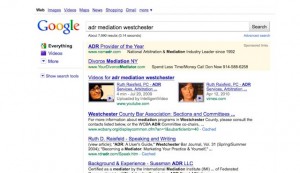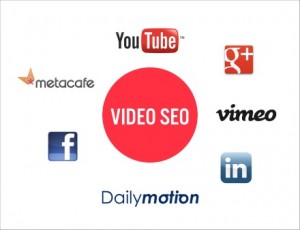Video: The Secret to a First-Page Google Ranking
Tara Baboushkin | @TaraBaboushkin Pop quiz: If you needed information on the mating habits of the red-breasted Nuthatch species, would you rather read through a two-page article or watch a four-minute video about it? Be honest, we won’t judge.
How many said video? That’s what I thought.
Let’s face it, we’re not just a digital society, we’re a visual one. And we’re also a busy one. When we need information, more often than not, we opt for the source that’s fastest, most accessible and most appealing. And so does Google.
Since the King of Search Engines began implementing its Universal Search feature a few years ago, videos have been popping up on page one of search results with increasing frequency. In fact, studies suggest that pages with videos on them are over 50 times more likely to appear on the first page of Google results than text-only pages. This video SEO surge has only been reinforced by the 2011 release of Google Panda, which began factoring in the duration of the click-through as part of the search algorithm. Sites that have a longer click-through are deemed higher quality pages, and therefore have a higher ranking in search results. And what better way to keep visitors on a page than with a video: studies show not only that video results have a 41% higher click-through rate than plain text pages, but also that people spent two minutes longer on a website when they watched a video.
Now, this is all very interesting, but what does it really mean? What it means is that if your website doesn’t have a video on it, you’d better get cracking! Alert the marketing team: You’ve got a surefire way to improve your SEO ranking and provide that extra edge in your social media presence.
But, (yes, of course there’s a “but,” there always is), if you’re going to use video content to bolster your SEO, it’s crucial that you do it right. As one blog commentator pointed out, while the point of Google’s Universal Search is to provide a more diverse set of results, it’s not going to include non-Web search results that aren’t relevant or that do not meet quality requirements. In other words, if the content on a website is second-rate, putting it into video isn’t going to make it any better. In the end, quality is still paramount.
To maximize the impact of video SEO, it’s imperative that you pay attention both to content – over 80% of the videos in Google search results are informational videos, as opposed to videos that are purely sales-based, which rank lower – as well as to format, including sound and image quality, video length and dimensions. The other factor you want to consider is whether to host your video on your own website or upload it onto one or more video search engines, such as YouTube, Daily Motion, Metacafé, and Vimeo.
While uploading a video to YouTube vastly improves your chances of getting a first-page ranking – 80% of Google’s video results are from YouTube – it doesn’t necessarily translate to higher click-through or conversion rates for your site, since the video will be driving traffic to YouTube, not your website. On the other hand, self-hosting comes with its own drawbacks, (aside from lower rankings), such as the additional cost of a streaming server.
A good solution you may want to consider is a combination of both options, whereby YouTube acts as a preview or “trailer” – in the form of a short commercial or even an excerpt of your film – enticing viewers to click through to the main attraction, which is hosted on your site. Since YouTube is the best way to get your video seen, but not necessarily the best way to drive traffic to your website, using this approach allows you to capitalize on YouTube’s mass exposure rates while at the same time promoting your objective of driving more traffic to your website.
Any which way you cut it, video is becoming an important part of SEO strategy, and incorporating it into your existing marketing approach and social media presence can only benefit your bottom line – as long as you do it right.
Need help with video? We offer YouTube services.



